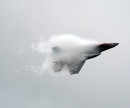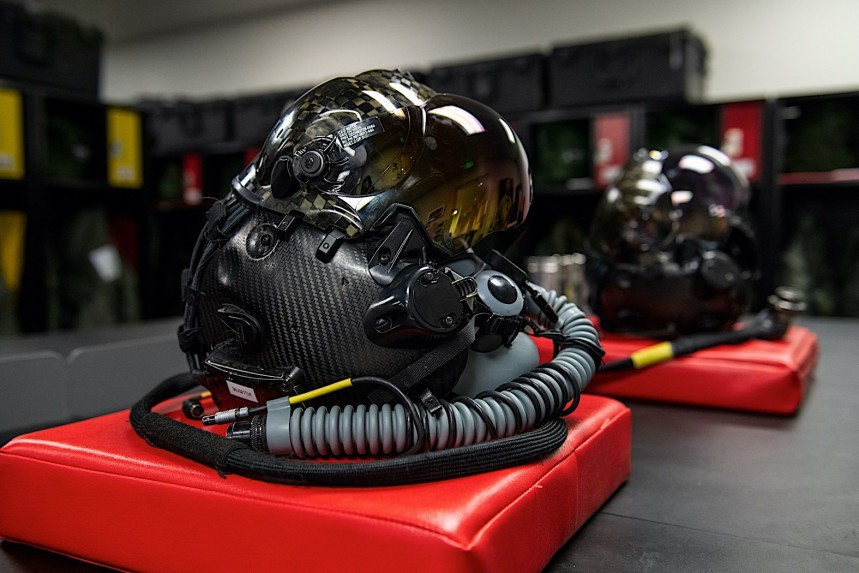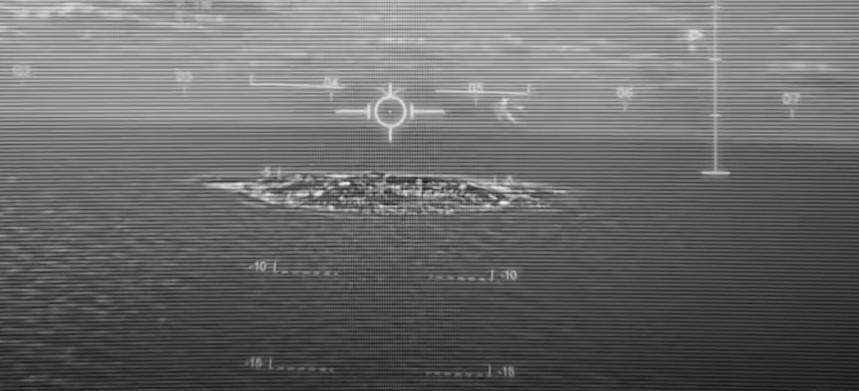Fighter pilots get to operate incredible machines, but it’s not only the airplanes they fly that make a difference. Although their winged companions are the most visible aspects of the job, there are other pieces of technology pilots need to effectively perform their duties. And our focus today, thanks to a number of details released not long ago by the U.S. Air Force (USAF), is the helmet.
Technically speaking, helmets have been around pretty much for as long as planes have been around. At first, pilots would wear the same type of helmet used in racing, but in just a few short decades, at the beginning of aviation, the hardware would evolve into pieces that could hold radio earphones and goggles.
During World War II, because airplanes were capable of flying at higher altitudes, helmets, most of them still of a soft design, would become capable of supporting oxygen masks.
The hard helmets we know today only came to be, mostly, after the end of the Second World War, and started being fitted with visors that would protect the eyes of the pilots from powerful sunlight.
As technology progressed, these visors would grow to incorporate all sorts of visual aids for the pilots, and over time have evolved into computers in their own right, or at least very advanced interfaces that work perfectly with all the communications equipment now incorporated into the helmets.
One of the most advanced such helmets today is the one used by the pilots of F-35 airplanes. Developed by Elbit Systems, it incorporates a so-called F-35 Gen III Helmet Mounted Display System (HMDS) made by Rockwell Collins (now part of Collins Aerospace).
Made of carbon fiber, this $400,000 piece of equipment is an engineering masterpiece in its own right, and during a demonstration at the Hill Air Force Base, Utah in early July, USAF showed us just why this is so. During the demonstration, the people who usually work on the helmet presented some of its features, especially those of the HMDS.
First, you need to know these things don’t just roll out the assembly line and get distributed to pilots. Each helmet is custom made to fit the wearer, during a two-day process. For that to happen, pilots heads are of course measured and scanned at first.
Once the helmet is ready, it is fitted with optics, which are then aligned with the help of a pupilometer that measures the distance between the pilot’s pupils “within two millimeters of its center.” This allows for the visuals generated by the helmet to be shown in a single image to its owner.
The HMDS is of course the centerpiece of the helmet. It comprises a head-up display (HUD), helmet-mounted display, and visor-projected night vision, but can also be used to target the weapons of the airplane.
The system can show a 360-degree view of the F-35’s external environment, without the need for the pilot to maneuver their plane into a suitable position. This is done thanks to a multitude of cameras fitted on the outside of the jet that activate once the pilot looks in that direction, and then display the image inside the helmet, effectively removing the plane from the pilot's field of view and allowing humans to see in all directions.
And pilots can do this day or night, thanks to the built-in night vision system, and can use the same technique, which would be looking, to target stuff from high up in the air.
All this technology is used in such a small device as a means to allow pilots to control one of the most advanced military machines in the world. The F-35, made by Lockheed Martin has been in active service since 2015, and packs impressive performance levels.
Using a single Pratt & Whitney F135 engine, the airplane can fly at speeds of Mach 1.6 and at altitudes of 50,000 feet (15,000 meters). Carrying guns, missiles and bombs, it can strike targets as far as 770 miles (1,239 km) away from its base, when using only the internal fuel supplies.
Despite the rather recent introduction date, there have been quite a number of F-35s made already - close to 700 F-35s in different configurations are presently serving the needs of about ten countries around the world.
During World War II, because airplanes were capable of flying at higher altitudes, helmets, most of them still of a soft design, would become capable of supporting oxygen masks.
The hard helmets we know today only came to be, mostly, after the end of the Second World War, and started being fitted with visors that would protect the eyes of the pilots from powerful sunlight.
As technology progressed, these visors would grow to incorporate all sorts of visual aids for the pilots, and over time have evolved into computers in their own right, or at least very advanced interfaces that work perfectly with all the communications equipment now incorporated into the helmets.
Made of carbon fiber, this $400,000 piece of equipment is an engineering masterpiece in its own right, and during a demonstration at the Hill Air Force Base, Utah in early July, USAF showed us just why this is so. During the demonstration, the people who usually work on the helmet presented some of its features, especially those of the HMDS.
First, you need to know these things don’t just roll out the assembly line and get distributed to pilots. Each helmet is custom made to fit the wearer, during a two-day process. For that to happen, pilots heads are of course measured and scanned at first.
Once the helmet is ready, it is fitted with optics, which are then aligned with the help of a pupilometer that measures the distance between the pilot’s pupils “within two millimeters of its center.” This allows for the visuals generated by the helmet to be shown in a single image to its owner.
The system can show a 360-degree view of the F-35’s external environment, without the need for the pilot to maneuver their plane into a suitable position. This is done thanks to a multitude of cameras fitted on the outside of the jet that activate once the pilot looks in that direction, and then display the image inside the helmet, effectively removing the plane from the pilot's field of view and allowing humans to see in all directions.
And pilots can do this day or night, thanks to the built-in night vision system, and can use the same technique, which would be looking, to target stuff from high up in the air.
All this technology is used in such a small device as a means to allow pilots to control one of the most advanced military machines in the world. The F-35, made by Lockheed Martin has been in active service since 2015, and packs impressive performance levels.
Despite the rather recent introduction date, there have been quite a number of F-35s made already - close to 700 F-35s in different configurations are presently serving the needs of about ten countries around the world.



















